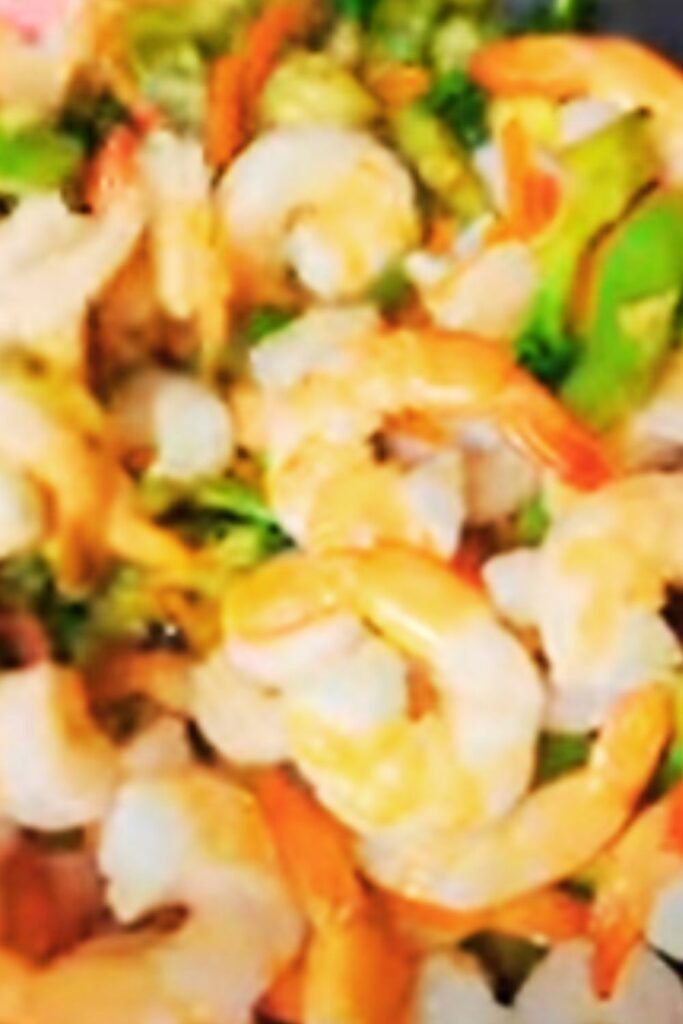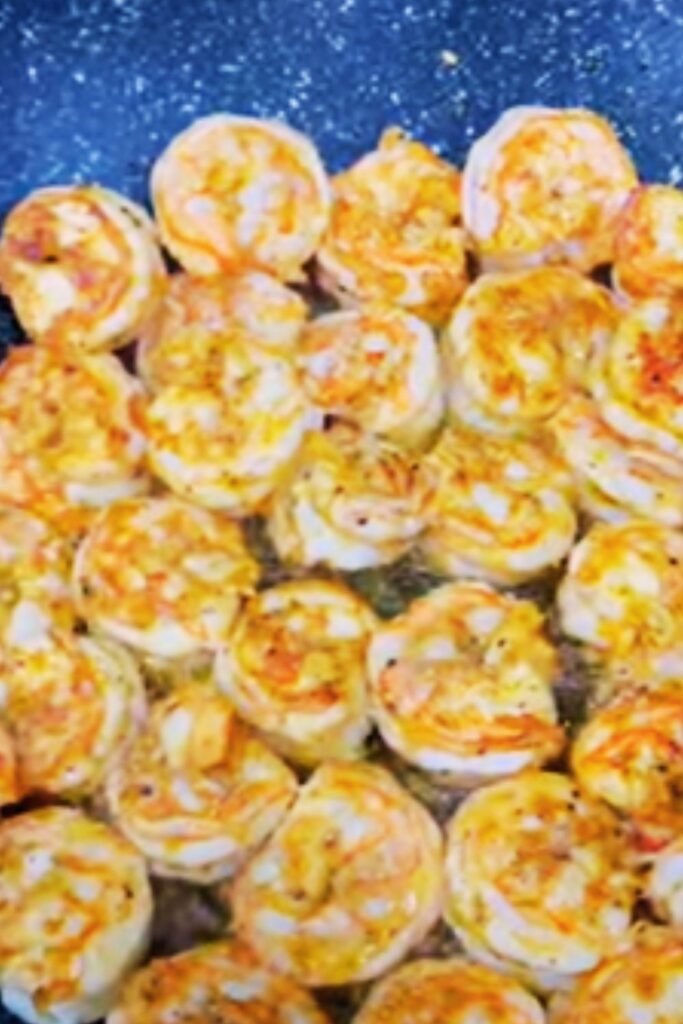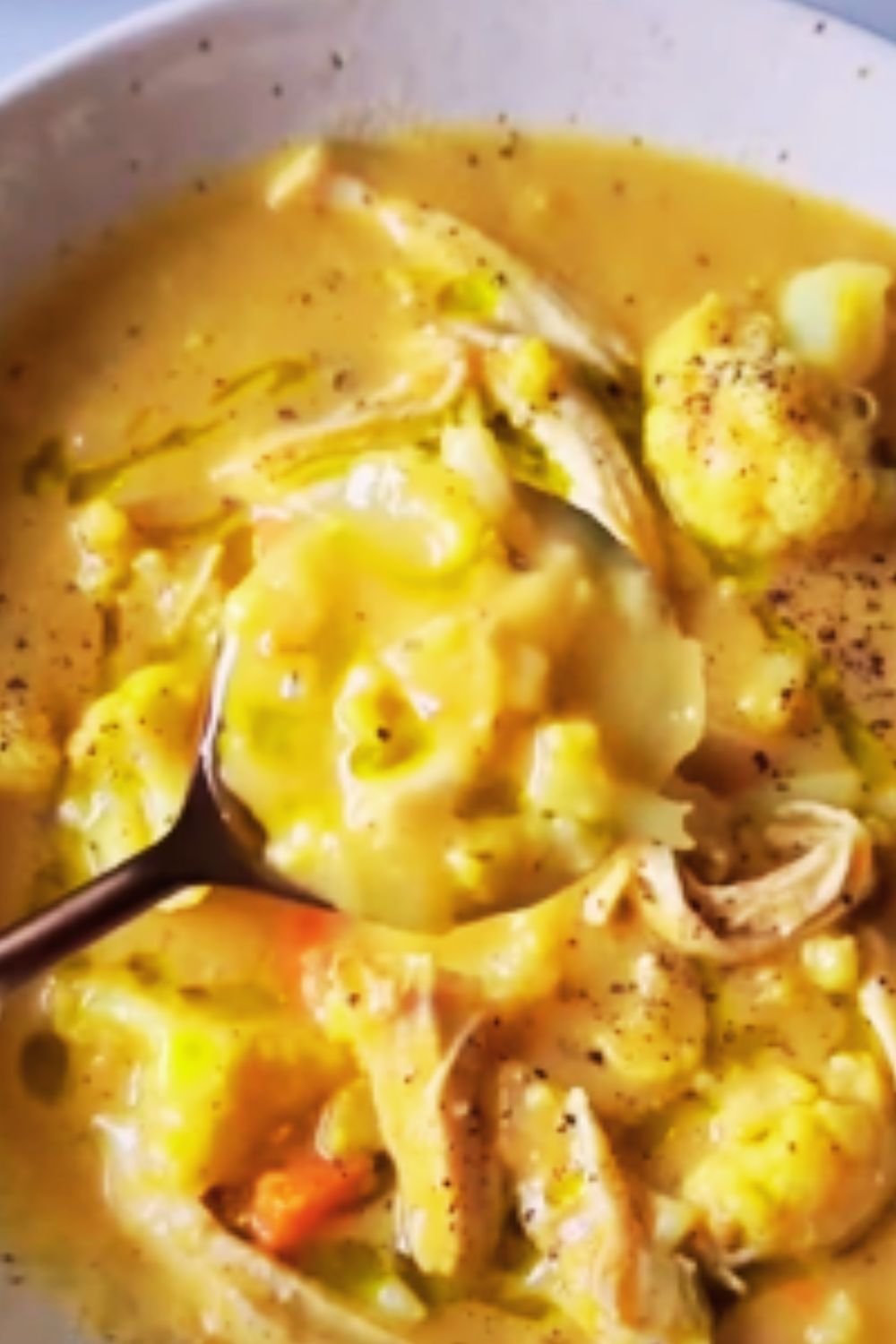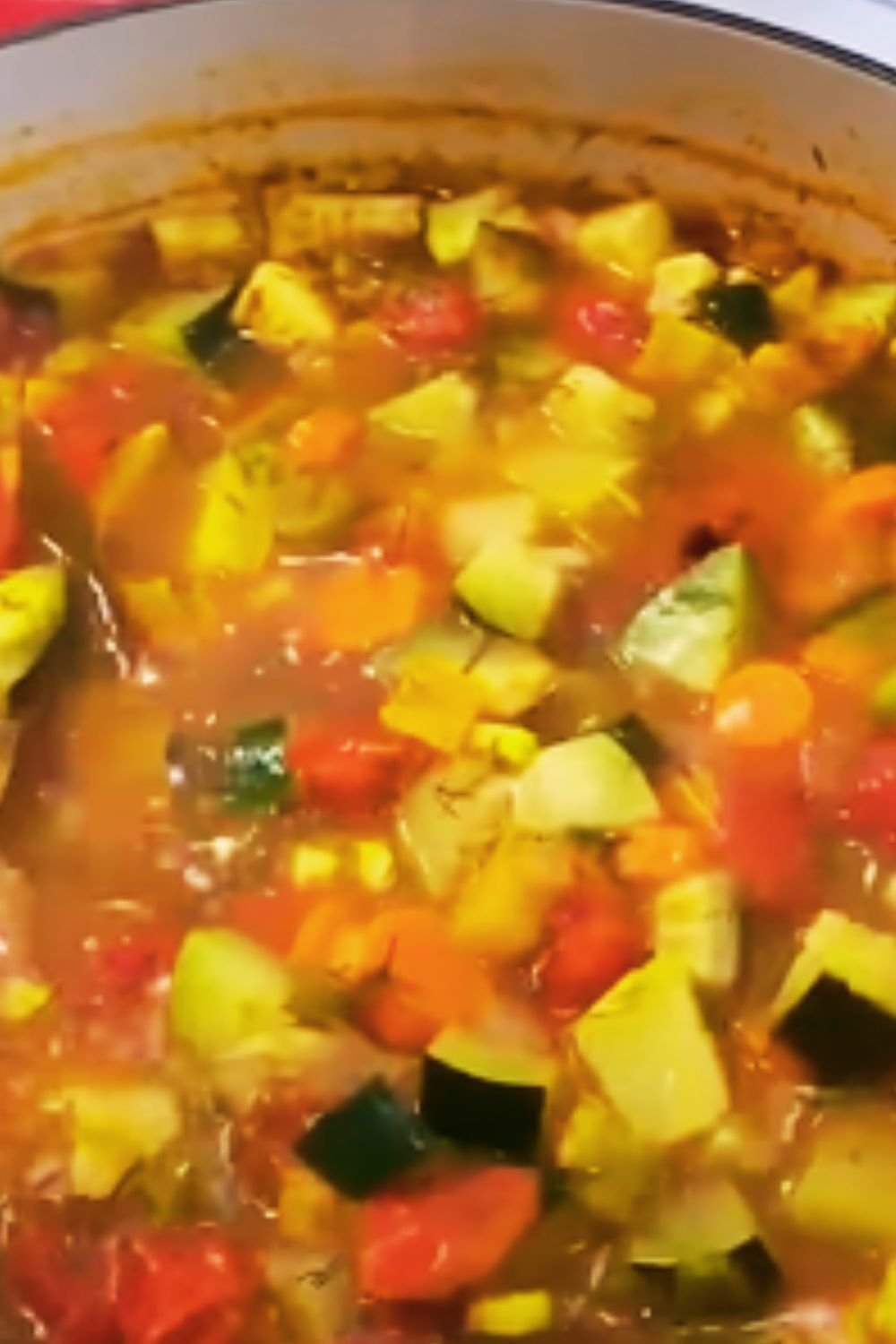There’s something magical about a sizzling wok filled with vibrant vegetables and succulent shrimp, all glistening with that perfect savory sauce. Shrimp Chop Suey has been my go-to comfort food for years, and I’m thrilled to finally share my perfected recipe with you today! This dish brings together the freshest ingredients in a harmonious blend that’s not just delicious but also incredibly nutritious.
When I first attempted making Chop Suey at home, I was intimidated by the seemingly complex process. But after countless tries (and a few memorable kitchen mishaps!), I’ve streamlined this recipe to be completely foolproof while maintaining that authentic flavor profile you’d expect from your favorite Chinese restaurant.
What Makes This Shrimp Chop Suey Special
Chop Suey originated among Chinese American communities in the 19th century and has evolved into a beloved staple across American Chinese cuisine. The term “chop suey” literally means “odds and ends” or “mixed pieces,” which perfectly describes this versatile stir-fry.
My version stands out because:
- I use a two-stage cooking method that ensures the shrimp remains tender while vegetables maintain their perfect crunch
- The sauce balances five essential flavor profiles: salty, sweet, umami, tangy, and aromatic
- Every ingredient serves a purpose—nothing is wasted or unnecessary
- It’s ready in just 30 minutes but tastes like it simmered all day
Let me walk you through creating this extraordinary dish that’s sure to become a regular in your meal rotation!
Ingredients You’ll Need
For the Shrimp and Marinade:
- 1 pound large shrimp (21-25 count), peeled and deveined
- 1 tablespoon Shaoxing wine (or dry sherry)
- 1 teaspoon freshly grated ginger
- ½ teaspoon baking soda (my secret for ultra-tender shrimp!)
- ¼ teaspoon white pepper
- 1 teaspoon cornstarch
For the Sauce:
- ⅓ cup chicken broth (low sodium)
- 2 tablespoons oyster sauce
- 1 tablespoon light soy sauce
- 1 teaspoon dark soy sauce (for color)
- 1 teaspoon sesame oil
- 1 tablespoon cornstarch
- 1 teaspoon sugar
- ¼ teaspoon white pepper
For the Stir-Fry:
- 3 tablespoons high-heat oil (peanut or avocado oil work best)
- 3 cloves garlic, minced
- 1 tablespoon fresh ginger, julienned
- 1 small onion, sliced
- 1 carrot, julienned
- 1 celery stalk, thinly sliced on a diagonal
- 1 small bok choy, leaves separated and stems sliced
- 8 oz bean sprouts, washed
- 4 oz snow peas, strings removed
- 8 oz water chestnuts, drained and sliced
- 4 shiitake mushrooms, stemmed and sliced
- 2 scallions, cut into 2-inch segments
Equipment Needed
- A large wok or 12-inch skillet
- Sharp chef’s knife and cutting board
- Mixing bowls (various sizes)
- Measuring spoons and cups
- Wooden or silicone spatula
- Small whisk for the sauce

Step-by-Step Instructions
Preparing the Shrimp
- Check your shrimp carefully. After peeling and deveining, I always pat them dry with paper towels. This ensures they’ll sear properly rather than steam.
- In a medium bowl, combine the shrimp with Shaoxing wine, grated ginger, baking soda, white pepper, and cornstarch. Mix gently but thoroughly.
- Let the shrimp marinate for at least 15 minutes but no longer than 30 minutes. The baking soda works its magic during this time, making the shrimp incredibly tender.
Making the Sauce
While the shrimp marinates, whisk together all the sauce ingredients in a small bowl until the cornstarch has completely dissolved. This is crucial—nobody wants cornstarch lumps in their finished dish!
The sauce should have a silky consistency and a rich brown color from the dark soy sauce. Set this aside near your cooking area.
Preparing the Vegetables
The key to exceptional Chop Suey is having all ingredients prepped before heating your wok. I arrange everything in small bowls according to cooking order:
- First group: garlic and ginger
- Second group: onion, carrot, and celery
- Third group: bok choy stems, water chestnuts, and mushrooms
- Fourth group: bok choy leaves, bean sprouts, snow peas, and scallions
This organization, called “mise en place,” makes the actual cooking process smooth and stress-free!
Cooking the Dish
- Heat your wok over high heat until a drop of water instantly evaporates on contact. Add 2 tablespoons of oil and swirl to coat.
- Add the marinated shrimp in a single layer and let them sear undisturbed for 30 seconds. Then stir-fry for another 30-60 seconds until they’re pink and just barely cooked through. They should still have a slight translucence in the center. Remove to a clean plate.
- Add the remaining tablespoon of oil to the wok. Add garlic and ginger, stir-frying for just 10 seconds until fragrant.
- Add onion, carrot, and celery, stir-frying for 2 minutes until slightly softened but still crisp.
- Add bok choy stems, water chestnuts, and mushrooms. Stir-fry for another 2 minutes.
- Add the bok choy leaves, bean sprouts, snow peas, and scallions. Toss for 1 minute until the leaves begin to wilt.
- Return the shrimp to the wok and toss to combine with the vegetables.
- Give your sauce a quick whisk to recombine, then pour it around the sides of the wok. Stir constantly as the sauce bubbles and thickens, about 30-60 seconds.
- Once everything is coated in the glossy sauce, remove from heat immediately to prevent overcooking.

Pro Tips for Perfect Chop Suey
I’ve learned these secrets through years of trial and error:
- Timing is everything: Have all ingredients prepped and ready before heating your wok
- High heat is essential: Your wok or pan should be smoking hot before adding oil
- Keep it moving: Constant stirring prevents burning and ensures even cooking
- Don’t overcrowd: If your wok isn’t large enough, cook in batches rather than piling everything in at once
- Sauce consistency matters: If your sauce gets too thick, add a tablespoon of water; if too thin, mix a teaspoon of cornstarch with a tablespoon of water and add it gradually
Nutritional Information
I’ve broken down the nutritional content for this recipe per serving (based on 4 servings):
| Nutrient | Amount | % Daily Value |
|---|---|---|
| Calories | 285 | – |
| Protein | 24g | 48% |
| Carbohydrates | 23g | 8% |
| Dietary Fiber | 6g | 24% |
| Sugar | 8g | – |
| Fat | 12g | 15% |
| Saturated Fat | 1.8g | 9% |
| Cholesterol | 172mg | 57% |
| Sodium | 680mg | 30% |
| Potassium | 715mg | 20% |
| Vitamin A | 4825IU | 97% |
| Vitamin C | 42mg | 51% |
| Calcium | 135mg | 14% |
| Iron | 3.2mg | 18% |
This shrimp chop suey isn’t just delicious—it’s a nutritional powerhouse! The abundance of vegetables provides essential vitamins and fiber, while the shrimp delivers high-quality protein with minimal fat.
Variations to Try
The beauty of chop suey is its versatility. Here are some delicious ways to adapt this recipe:
Protein Swaps
- Substitute chicken breast cut into thin strips (cook for 2-3 minutes before removing)
- Use thinly sliced beef sirloin (cook for 1-2 minutes before removing)
- Make it vegetarian with firm tofu cubes or tempeh (press and dry thoroughly before cooking)
Vegetable Options
- Add baby corn for sweetness and texture
- Include bamboo shoots for traditional flavor
- Try thinly sliced bell peppers for color and vitamin C
- Swap bok choy with napa cabbage or regular cabbage
Sauce Adjustments
- Add a teaspoon of chili oil or sriracha for heat
- Include a tablespoon of hoisin sauce for sweetness
- Try a splash of fish sauce for deeper umami flavor
- Make it gluten-free by using tamari instead of soy sauce and GF oyster sauce
Serving Suggestions

Shrimp chop suey is traditionally served over steamed rice, which soaks up that incredible sauce. Here are my favorite serving options:
- Jasmine rice or long-grain white rice
- Brown rice for added nutrition and nutty flavor
- Cauliflower rice for a lower-carb alternative
- Thin egg noodles or rice noodles
I like to garnish with:
- Extra sliced scallions
- Toasted sesame seeds
- Crispy fried wonton strips for textural contrast
- Fresh cilantro leaves
- A squeeze of fresh lime juice right before eating
Complete your meal with:
- Hot and sour soup or egg drop soup as a starter
- Steamed vegetable dumplings
- Fresh spring rolls with peanut dipping sauce
- Chinese tea like oolong or jasmine
Storage and Reheating Tips
Shrimp chop suey actually tastes fantastic the next day! The flavors continue to develop overnight. Here’s how I handle leftovers:
- Refrigeration: Store in an airtight container for up to 2 days. Any longer and the vegetables will lose their crisp texture.
- Freezing: While possible, I don’t recommend freezing this dish as the vegetables become mushy and the shrimp can develop a rubbery texture.
- Reheating: The microwave works in a pinch, but for best results, reheat in a wok or skillet over medium-high heat with a tablespoon of water to revive the sauce. Heat just until warmed through—about 2-3 minutes—to avoid overcooking the shrimp.
Common Questions About Shrimp Chop Suey
What’s the difference between chop suey and chow mein? Chop suey is primarily a vegetable dish with meat served with sauce over rice, while chow mein features fried noodles as its base. Chop suey tends to have more sauce and a greater variety of vegetables.
Can I make shrimp chop suey ahead of time? I recommend preparing all ingredients ahead of time, but the actual cooking should be done just before serving. If necessary, you can stir-fry the vegetables earlier in the day, then reheat them and add the cooked shrimp and sauce right before serving.
Why is my sauce not thickening properly? Make sure your cornstarch is fully dissolved in cold liquid before adding it to the wok. Also, the sauce needs to reach a simmer to activate the thickening properties of cornstarch.
How can I make this dish less salty? Use low-sodium soy sauce and chicken broth, and consider reducing the oyster sauce to 1 tablespoon.
Is chop suey authentically Chinese? Chop suey is considered Chinese American cuisine. While it uses Chinese cooking techniques and ingredients, it was developed by Chinese immigrants in America in the late 19th century.
What if I can’t find water chestnuts? You can substitute with jicama or simply leave them out. The dish will be missing that signature crunch, but will still taste delicious.
How do I prevent shrimp from becoming rubbery? The baking soda in the marinade helps prevent this, but also be sure to cook shrimp just until pink and opaque. They’ll continue cooking slightly when returned to the wok with the sauce.
Why This Recipe Works
After making chop suey countless times, I’ve identified the key factors that make this version exceptional:
- The two-stage cooking method: By removing the shrimp after initial cooking and returning them at the end, they remain tender and perfectly cooked.
- Layering vegetables by cooking time: Adding vegetables in stages ensures each one achieves its optimal texture—no mushy carrots or undercooked bok choy!
- The secret baking soda trick: This slightly increases the pH of the shrimp, preventing them from tightening too much during cooking.
- Balance of flavors: The sauce combines sweet, salty, savory, and tangy elements in perfect harmony.
- Minimal thickener: Using just enough cornstarch to create a silky sauce without becoming gloopy or starchy.
I’m confident that once you try this recipe, it will become a regular in your meal planning. It’s the perfect balance of healthy, flavorful, and impressively quick to prepare. Even on my busiest weeknights, I can have this restaurant-quality dish on the table in half an hour.

Final Thoughts
Shrimp chop suey represents everything I love about cooking—fresh ingredients transformed through simple techniques into something greater than the sum of its parts. The contrasting textures, vibrant colors, and harmonious flavors create a truly satisfying meal that nourishes both body and soul.
What I appreciate most about this dish is its adaptability. You can customize it based on seasonal produce or what you have on hand. The basic formula remains the same: quick-cooking protein, crisp-tender vegetables, and a savory sauce that brings everything together.
I hope this recipe brings as much joy to your table as it has to mine over the years. There’s something deeply satisfying about mastering a restaurant favorite at home—especially when you can make it healthier and tailored to your taste preferences.
Give it a try, and I’d love to hear how it turns out for you! May this meal truly be blessed with flavor, nutrition, and the happiness that comes from sharing delicious food with the people you care about.


